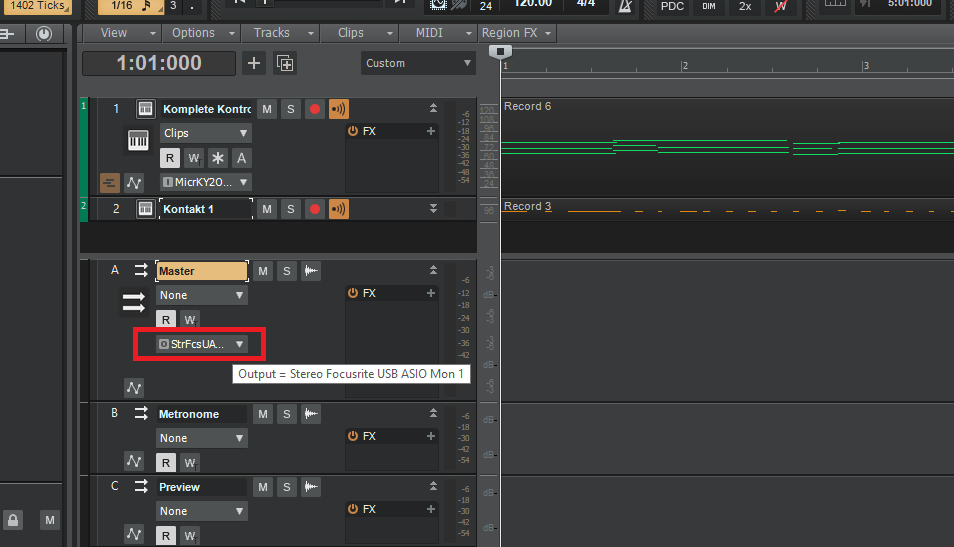-
Posts
7,019 -
Joined
-
Last visited
-
Days Won
38
Posts posted by msmcleod
-
-
@micv - there's two ways to edit only a specific envelope:
1. Use the Track filter to select the envelope you want to edit: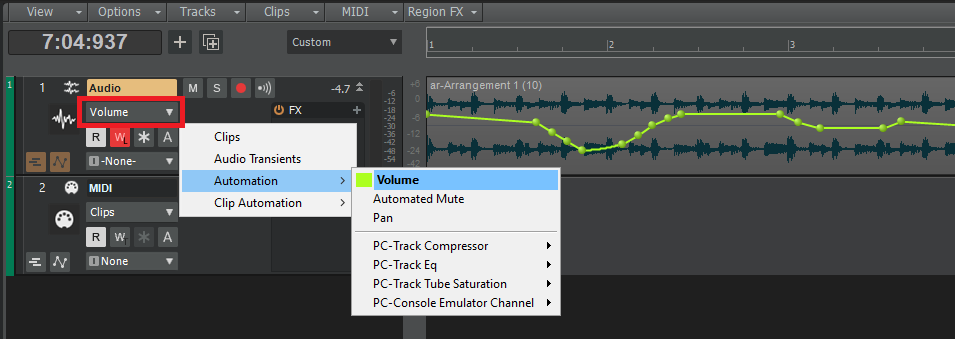
2. Use the automation lanes:
Also another thing to bear in mind:
Deleting an automation lane does not delete the envelope - it only removes the lane. You can get the "hidden" lanes back by SHIFT + clicking on the show/hide automation button...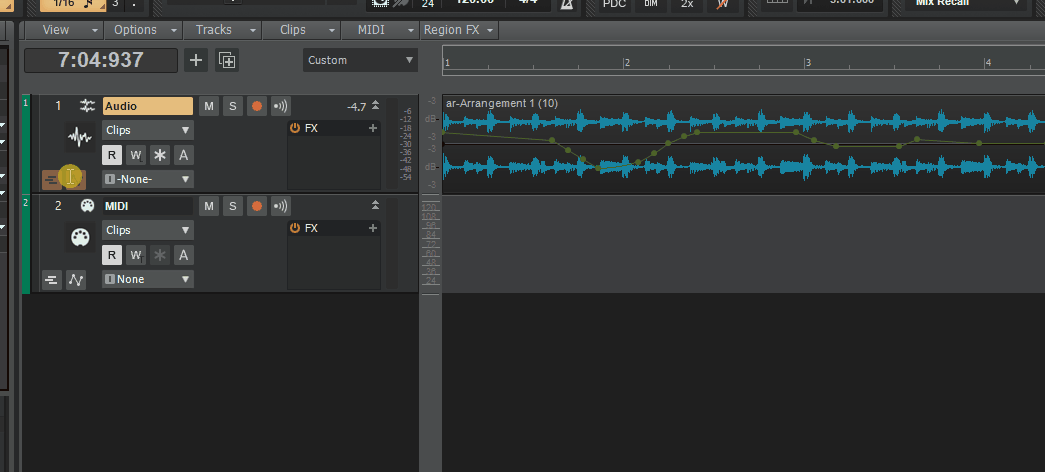
-
This is a pretty good video for getting you started:
-
 2
2
-
-
For piano, I find a buffer size of 64 at 44.1K is the maximum I can tolerate with my Focusrite Scarlett (4.6 msec latency, 9.3msec roundtrip). Any higher, and I notice the latency.
Increasing the sampling rate to 96K will more than half these figures, giving a input/output latency of 2.2 msec (4.4 msec roundtrip)... but this also increases the CPU usage.
For a CPU intensive project, that might mean temporarily bypassing FX or freezing tracks to avoid drop-outs.A more extreme version of this would be to mix down the whole project to a stereo track, and temporarily archive all the other tracks. In some ways this can be more convenient as there's very little "thought" about it when switching - i.e. you select all, unselect the mixdown track, and archive everything else.
Another alternative is to use an external MIDI sound module. I used to use my old Yamaha MU10 for this purpose, however depending on the part I was recording, the differences in response (e.g. velocity / feel) may or may not work as well when the part is played on a different piano sound.
Which method I choose depends largely on where I am in the project. In the early stages, I'll use FX bypassing or freezing. The mixdown/archive approach is more useful for last minute overdubs.
In all honesty though, I rarely need to any of this as I tend to treat tracking / mixing / mastering as separate tasks - i.e. I avoid trying to mix as I go along, and only use effects that contribute to the sound during the tracking stage.-
 1
1
-
 1
1
-
-
You'll probably get more consistent results recording automation in Latch mode:
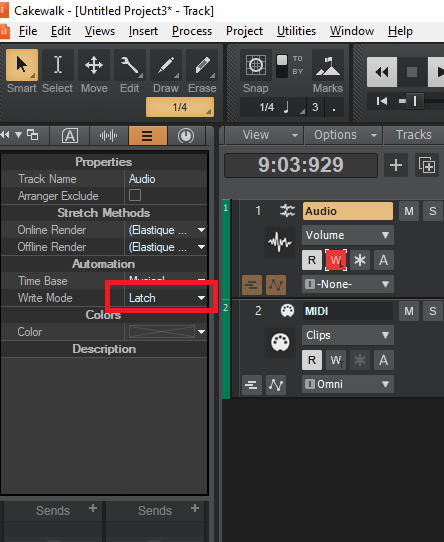
This will stop the jumps from being created when recording automation. Notice the "W" button has an "L" in the corner rather than "T".
An explanation of the automation modes can be found here: http://www.cakewalk.com/Documentation?product=Cakewalk&language=3&help=Automation.04.html
...but in essence, if you're creating automation for the first time on a track use Latch or Overwrite mode. Touch mode is more for tweaking existing automation, but to be honest, you'll probably find it easier sticking with Latch mode even for altering existing envelopes. The only gotcha is remembering to move your fader to the correct position when you stop your edits, and of course stopping the transport so it doesn't overwrite the remaining automation.
@Will_Kaydo / @Simon Wilkinson - I did manage to repro your delete issue twice, but had difficulty reproducing again. What I did notice was that once the Jumps were all changed to Linear, the issue went away. So it looks like there's a corner case where it sometimes gets confused with jumps between nodes. We'll look into it. In the meantime, you can always delete the remaining nodes in a second pass.
For the meantime though, give Latch mode a try and see if this works better for you.
-
 2
2
-
-
If you're using per output or simple instrument tracks, make sure you're on the MIDI tab:
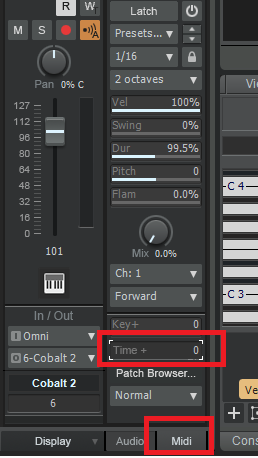
-
 1
1
-
 1
1
-
-
FYI Amazon UK are doing 2TB Crucial MX500's for £159.66 for the next 10 hours...
-
6 hours ago, xxrich said:
Good ideas but all hacks ? Staff view would be great but it's never (ever) worked well enough to be of much value. Lanes is just too much when you already have 100 or so tracks ? Just looking for enhanced Markers perhaps. Maybe a two tier system - the higher one you can create a colored blocks with. The lower one is what we have already. Just thinking . . .
-richAs @Noel Borthwick says, arranger tracks should be able to do this for you.
You can do the two tier thing already by having two arranger tracks, or you can use one arranger track in combination with markers if this works better for you.
You can also convert markers to / from arranger sections by using the time-ruler selection and the time ruler context menu. -
IIRC you need to set your MIDI driver mode to UWP to use Bluetooth MIDI in CbB.
This certainly works with my Korg nanoKONTROL Studio in Bluetooth mode, but it doesn't play well with my other MIDI interfaces (midisport 8x8 / midiface 8x8), so I use the wired connection with MME.
-
I'm still using my 18i20 - I love the pre's on that thing.
However I'm likely to upgrade to an RME Digiface USB in the near future, allowing me to use my existing hardware / interface pre's via ADAT, while take advantage of the RME's excellent low latency drivers.
The Digiface USB has 4 x ADAT inputs giving a maximum of 32 inputs / 34 outputs @ 44.1K / 48K.
Anyone looking for a cheap way of getting an RME should take a look at the Digiface USB.
An RME Digiface USB + Behringer ADA8200 will set you back around £500, with the option of adding or upgrading the ADA8200 to something better (e.g. Focusrite Octapre / Clarett Pre 8 / Audient ASP880) at a later date... or just adding a bunch of ADA8200 if you're happy with their pre's.
If you've already got an interface with an ADAT out already, then you're half way there already. -
FWIW I still use SoundFonts regularly.
I sampled all the patches I use from my old hardware synths, and I chose SF2 as my preferred format for 2 reasons:
1. My soundfont player (SampleLord) is way more CPU friendly than Kontakt / Dimensions / Rapture Pro... PLUS I can use SampleLord on my V-Machine.
2. SF2 files are easier to manage, as they're one file vs 10's or 100's (in the case of sfz).
At the end of the day, SoundFont is just a file format - it's no worse or better than any other format. Sure, there are advantages to some formats over others (e.g. release samples), but for me that's not an issue.
If I export my samples as .nki, they sound exactly the same in Kontakt as they do as a sf2 in SampleLord.-
 4
4
-
-
As there's only 12 voices on the P-200, it should take less than 5 minutes to create a new ins definition from within Cakewalk itself:
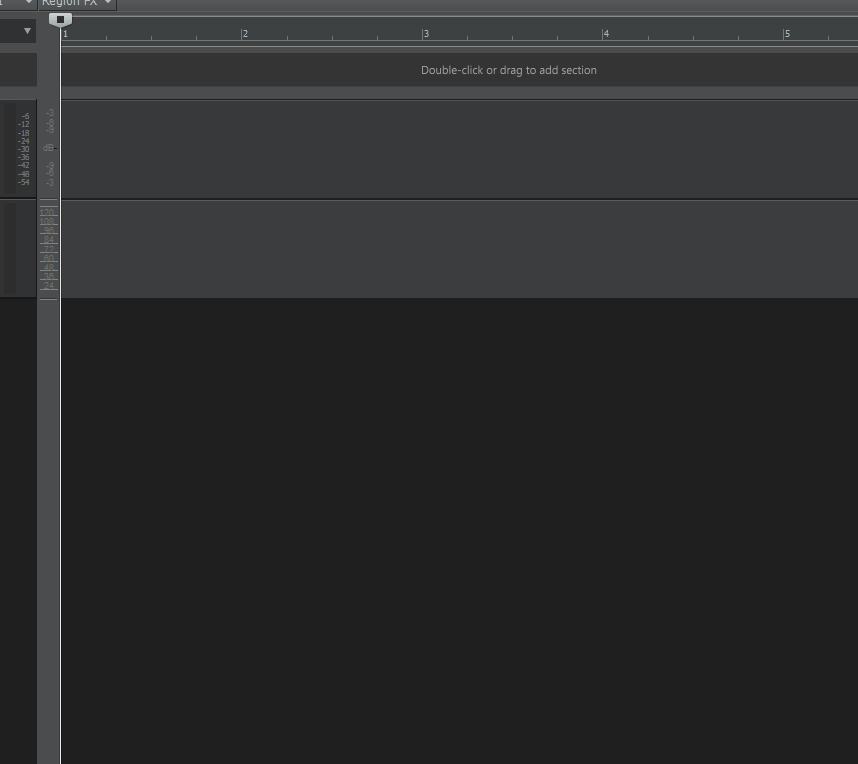
YamahaP200.ins-
 2
2
-
-
I'm not sure uninstalling ASIO drivers is necessary, or even desirable unless you're having issues... but in saying that, you should definitely uninstall ASIO4ALL, and any other "generic" ASIO drivers such as Steinberg's or Reaper's.
ASIOLink normally requires your existing ASIO driver to be there in order for it to use ASIO for your primary interface. All other interfaces are then connected via WDM.
I noticed zero difference in latency between my Focusrite ASIO driver and ASIOLink... but that was only because ASIOLink was essentially passing calls directly through to the Focusrite ASIO driver. If I had uninstalled my Focusrite ASIO drivers and let ASIOLink only use WDM, the latency would have been much worse. -
There's a number of things that could cause drop-out, although since you're recording MIDI and not audio, the fact that your 7200rpm disk is 85% full shouldn't really have too much of a bearing... however:
- If this is your system drive, and you've not got at least 16GB memory, disk activity could be high due to memory being swapped out.
- If you've got audio tracks streaming from your disk (or samples for your VSTi's), then this could slow things down... especially if your audio tracks are on the same drive as your OS.
- Do you have CPU hungry VST's on any audio tracks, or any CPU hungry VSTi's that could be causing dropouts? I'm assuming you're using ASIO on your Focusrite? If not, make sure you are. You can try increasing your ASIO buffer size to reduce CPU load. Another option would be to freeze any tracks that are causing drop-outs due to high CPU usage (although you then might have [2] to worry about).
Your CPU is more than capable of coping with most projects (it's pretty much on par with mine). So personally I'd recommend:
- Consider investing in an SSD for your system drive. You could then re-purpose your 7200rpm HDD for audio. Having your audio on a separate drive from your system drive can make a huge difference. If you can afford to get an additional SSD for audio/samples do so. For me, swapping to an SSD was like night & day - Omnisphere could take 45 seconds to load a patch from an HDD, whereas the same patch on an SSD is 2 seconds.
- Look at your memory usage in Task Manager and in particular the swap file usage. If there's a large amount of swap file activity, or your memory is over 75% usage, consider getting more RAM.
Before you make any purchase though, try to ascertain what is causing the drop out. Look at the drop out code, and refer to this chart: https://www.cakewalk.com/Documentation?product=Cakewalk&language=3&help=AudioPerformance.24.html . This should give you some indication as to what the underlying cause is.
-
I'm pretty sure CAL doesn't support Shape events... Shape events came along long after CAL was deprecated.
CAL was primarily designed to manipulate MIDI data. -
Every audio clip already has Gain & Pan automation. If you make it into a groove clip, you can change its pitch.
-
I'm using the Alesis Nitro Mesh kit.
Here's how I've set mine up:
- Alesis Nitro Mesh MIDI IN device enabled in CbB, but not the MIDI output device ( MIDI driver mode is MME )
- Insert Addictive Drums 2 as a simple instrument track - in AD2's map screen, I've created my own drum map to match the Nitro's notes.
That's pretty much it.
Seeing as the MIDI device is actually showing for you, I would look at the following:
- First check your MIDI driver mode within CbB Preferences (MIDI -> Playback & Recording). If it's set to UWP, try setting it to MME. You need to have no projects loaded to change this.
- Next, verify which MIDI notes are being sent. You could be really unlucky and find that the drum VST you're using has a completely different note mapping to the Nitro Mesh.
Try inserting a piano VST or something that covers the full range of notes. If you're getting notes being played by hitting your pads, then look at the note mapping within your drum VSTi.
If there's no way of mapping notes within the VSTi, then read up on creating drum maps. @Creative Sauce has a great tutorial here: https://www.youtube.com/watch?v=sIquUl-7NfE-
 1
1
-
-
Just remember, unless you've got something to sync the word clocks of multiple interfaces, expect some timing issues.
This can usually be done:
- by connecting the SPDIF out of one device (the timing master) to the SPDIF in of another, and making it the slave.
- by connecting the ADAT out of one device (the timing master) to the ADAT in of another, and making it the slave.
- by using a coax wordclock cable fed from one device to another, or from a master clock device to all of your devices.
If your audio interfaces have no way of doing this, you may need to nudge your audio clips a bit to line them up properly.
In saying that... they may be close enough for you not to notice... but pay attention to any phase issues.-
 1
1
-
 1
1
-
-
1 hour ago, Jacques Boileau said:
This looks very interesting. Never knew it's existence until now. Thanks @msmcleod for sharing.
I am trying to understand if it can help me in one area. I have a Focusrite 2i2 as my main interface and I have a Boss GT-1 guitar multieffect that also has a usb interface. Of course presently it's one or the other in Cakewalk. Could I use Odeus AsioLink and have the Boss GT-1 as an input and the Focusrite as the output?
Does the GT-1 actually send audio over the USB ? I'd be surprised if it does.
If it does send audio over USB probably could, but I'd be tempted to just stick with using the GT-1 analog out -> 2i2 audio in. -
7 hours ago, MediaGary said:
Thanks for showing us the way on this. I'm stumped right now:
I have ASIO Link Pro 2.4.4.2 running in two Win 10 (Home and Pro) computers in my "Test Lab" before I migrate to the Production Studio...
- Computer-A = ASIO Echo Audio Firewire (Echo Pre8) with ASIO Link Pro and CbB
- Computer-B = ASIO RME HDSP 9652 clock source ADAT with ADAT-1 /ADAT-2 from two different Audient ASP800's.
- AES/EBU master clock is from a Midas M32 to an Aardvark Sync DA that uses 3x BNC 75-ohm coax word-clock connections (2x ASP800 1x Echo Pre8)
- Network is 10GbE Ethernet ; Computer-A=192.168.1.121 Computer-B=192.168.1.123
I have verified that I have 'Received Audio Data' on 'Network In' coming from Comp-B to Comp-A. Network in a Comp-A is patched to 'ASIO Driver Out Mix' Signals from both the ASP800's and the Echo Pre8 show up as expected.
When I start CbB the first error message is that 'Analog Out 1-2' is in use by another application. The next error/problem message is that all of the 16 outputs of the Echo Pre8 are unavailable and muted. Another problem is that within CbB 'Preferences>>Devices' all the of Echo Pre8 check boxes work normally, but all the ASIO Link Pro check boxes for 'Input Drivers' and 'Output Drivers' are greyed out and inoperable.
I can't shake that feeling that I've missed something obvious, so I'm appealing here for ideas and diagnostic directions to take.
You need to uncheck all references of the Echo Pre 8 within CbB, and use the ASIO Link driver exclusively within CbB instead.
You just need to make sure all the inputs / outputs are created & routed for all your devices within ASIO Link. IIRC there is a limit of 64 inputs/outputs in all.
The last time I tried this, I noticed absolutely no difference in performance/latency using my Focusrite 6i6 going through the ASIO Link driver vs the native Focusrite driver.
-
12 hours ago, Rainer Haack said:
Thank you very much for your answer.
In this context I have a deeper question:
How can I record audio streams like youtube or desktop audio in cakewalk ? I do not mean the file import function from the file menu.
I want to process the recorded audio stream via loopback.VB Audio has a bunch of utilities to allow you to do this:
https://vb-audio.com/Cable/
-
It might be worth seeing if you can upgrade Kontakt 5.6 to Kontakt 5.8.1 - I'm running both Kontakt 5.8.1 and Kontakt 6 without issue.
You should be able to do this via Native Access, but NI has also provided a link on their forum: https://support.native-instruments.com/hc/en-us/community/posts/360005447937-Kontakt-5-8-1-installer-de-
-
I've been reading about this is on the Avid & Steinberg forums, just to get any indication as to what plans they have, but its pretty much all speculation at this point.
Going by past upgrades though (i.e. PPC to Intel, and also the OSX compatibility cycles), it's likely that the Intel Mac's will continue to be supported for around 5 years after the ARM macs start hitting the streets.
The more worrying issues for those tied to the Apple platform are:
- Will DAW companies, and more importantly plugin companies be able to make the switch? I mean, there's a lot of codebase there that may or may not be easy to port over. Some will simply be able to recompile for ARM, others may have DSP specially tuned for Intel and will require more work. Also differences in chip architecture / OS could mean major changes to their threading models. DAW companies that target both PC & Mac may have a tough decision to make here if they're looking at maintaining a divergent codebase moving forward.
- Will the audio interface companies be ready with drivers for the ARM macs? Presumably Apple will also need to come up with some new Thunderbolt 3 solution for ARM too, unless they ditch Thunderbolt and come up with some new proprietary interface.
- People who rely on bootcamp to run Windows will be out of luck. This feature was only viable because both OS's ran on the Intel architecture.
So even if the DAW companies manage to make the transition, there's a pretty good chance that you'll have to upgrade your audio interface and say goodbye to many of your plugins.
I can envisage a lot of pro studios moving over to Windows to avoid this pain.-
 1
1
-
-
I tend to rely on the Mix Module for this. If the record button in the mix module is highlighted, I just click it to disarm all tracks, then arm the track I want.
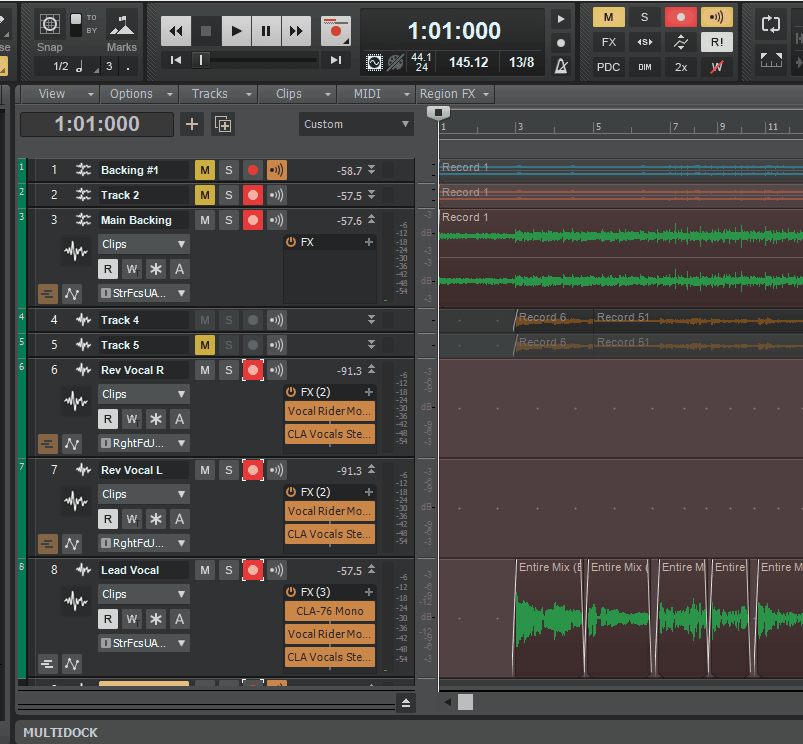
-
 1
1
-
-
There's no N series emulation - I've had both those modules (still got the NX5R), and I sampled mine to use them in the box.
The closest VSTi to the N series is probably the Korg M1 VSTi. The synth engine is actually better than the N series one, and the sound quality is far better, but it's not got as many multi-samples.


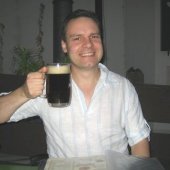
NO SOUND, NO PLAYBACK, HELP!
in Q&A
Posted
Make sure your Master bus is set to output to your audio device:
